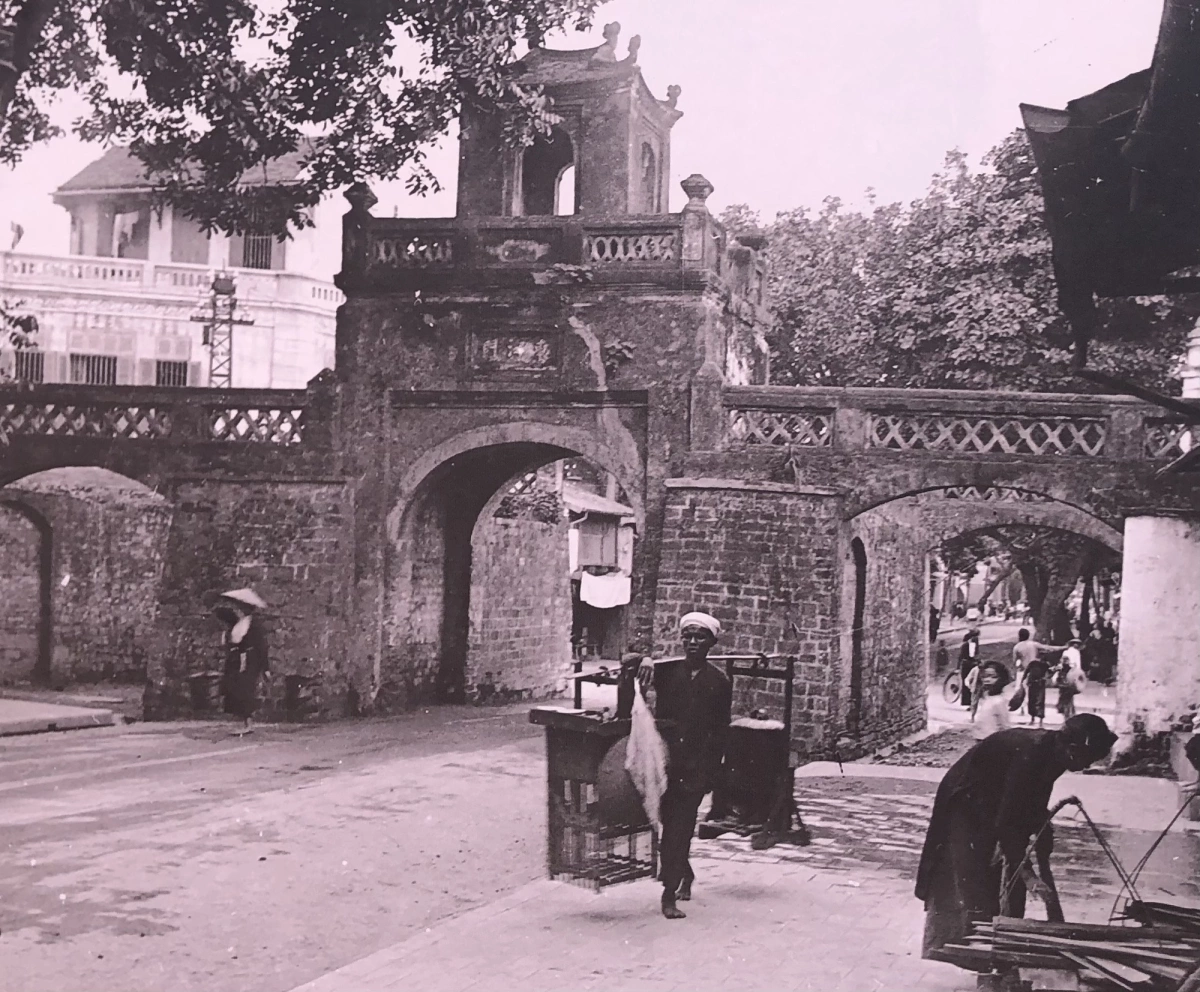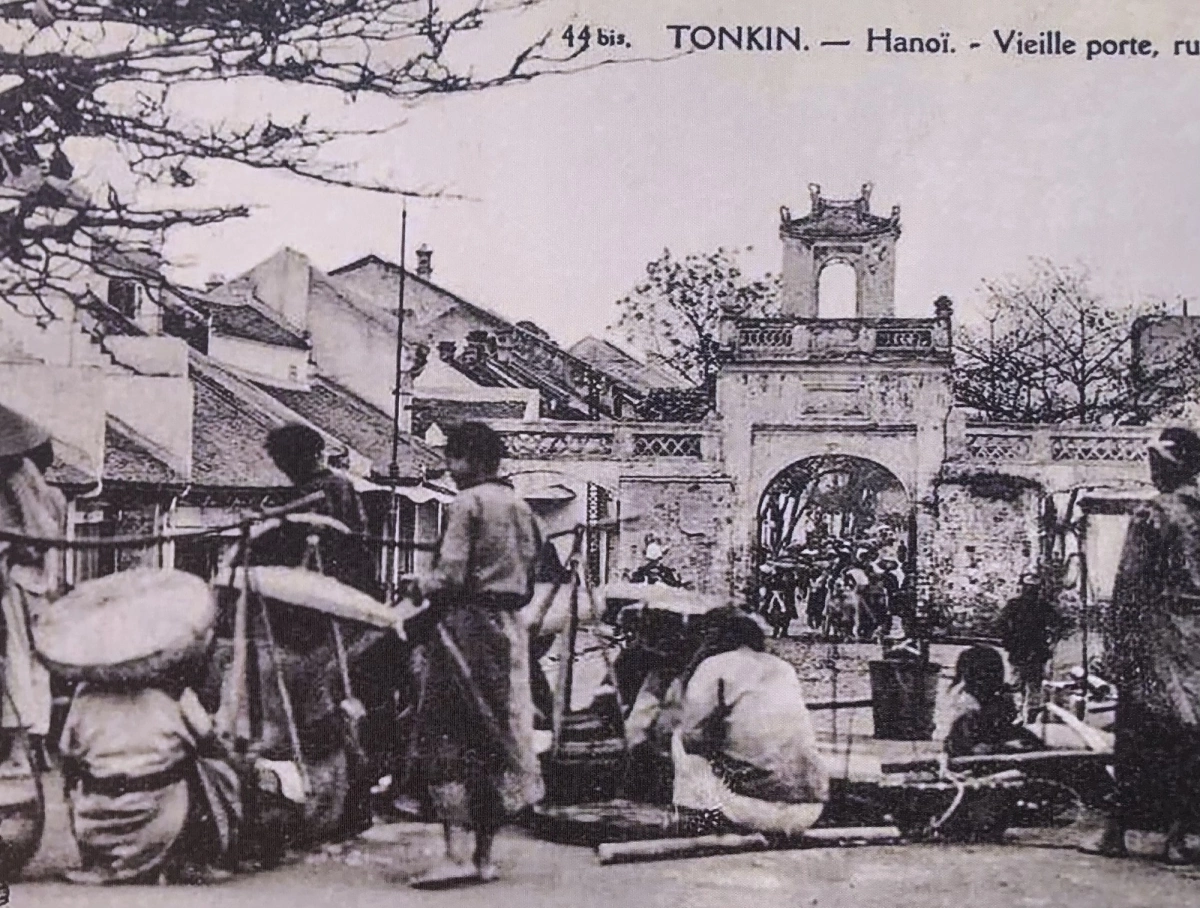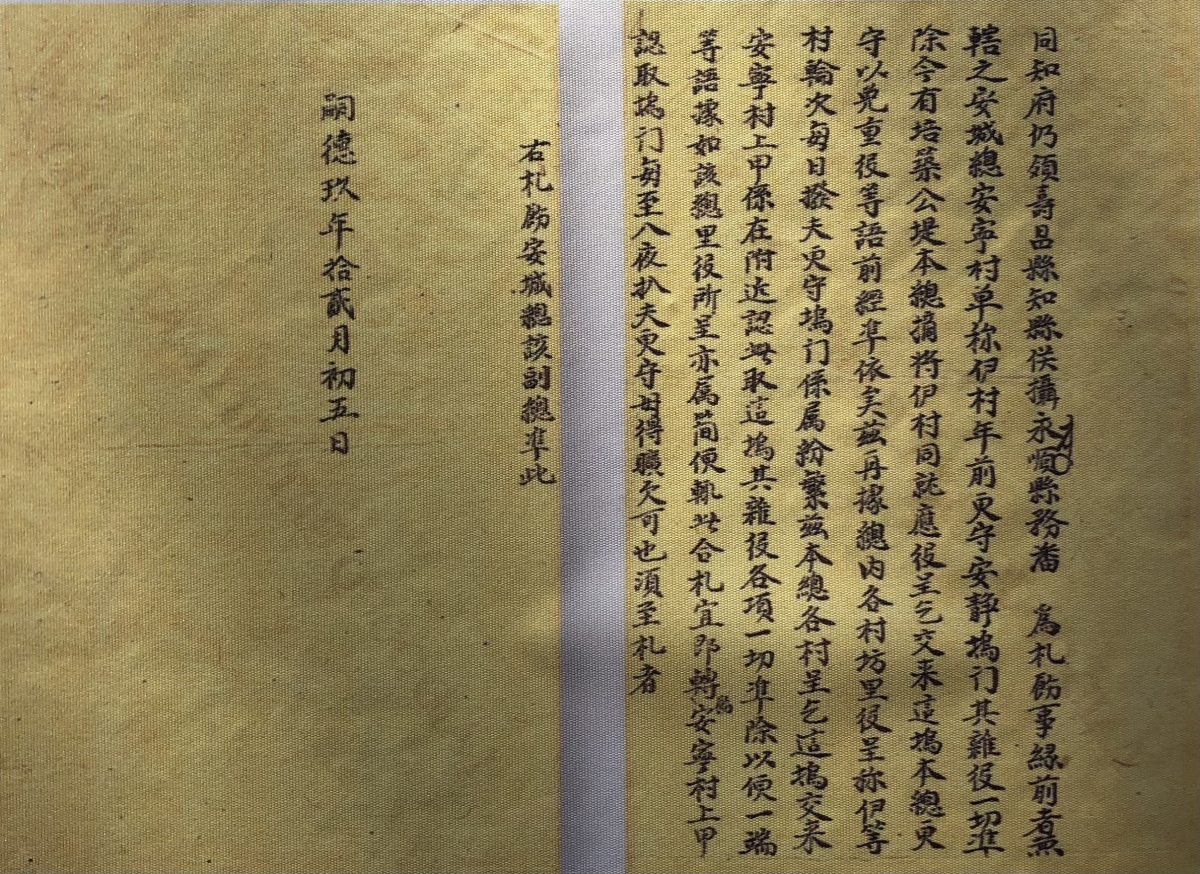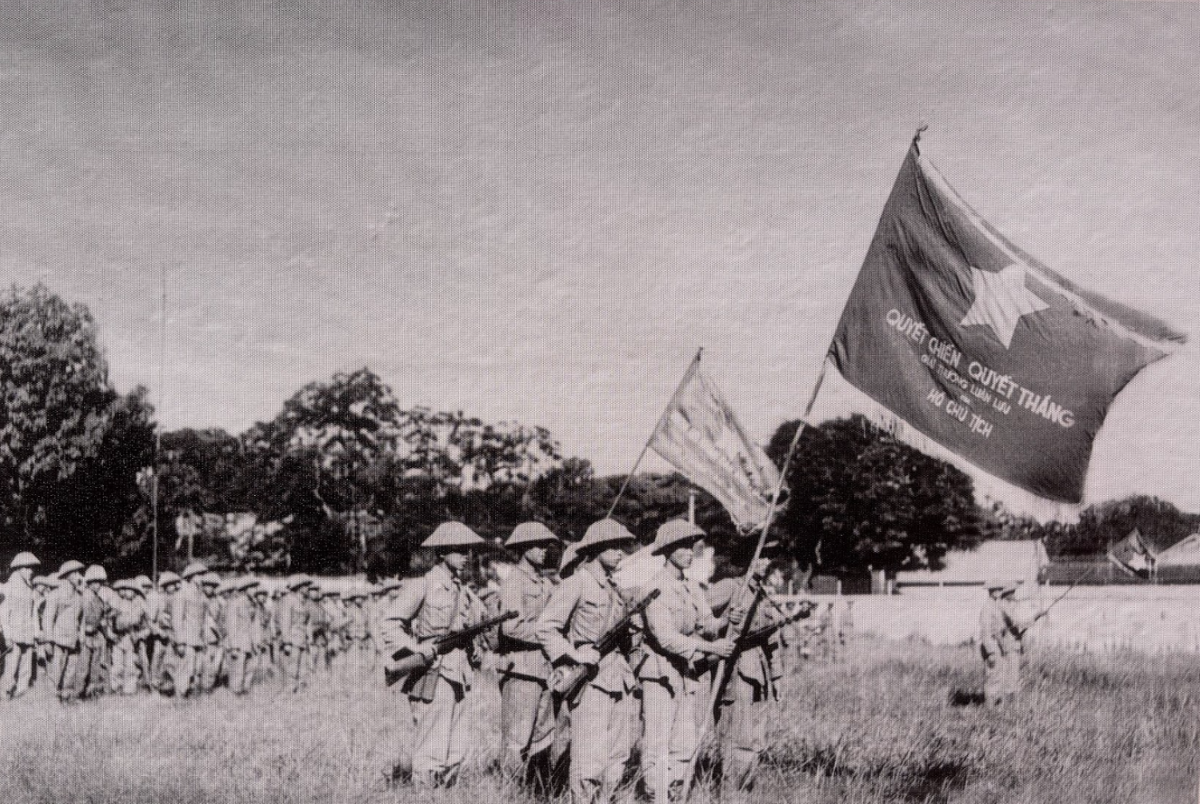Cau Den Gate at the end of the 19th century, now located at the intersection of Bach Mai, Dai Co Viet and Hue streets.
This photo is part of the "Ancient Gates" collection and displayed at the "Hanoi and its Ancient Gates" exhibition being organized by the National Archives Center I, the city Department of Home Affairs and the Thang Long Heritage Conservation Centre.
The exhibition is being held from Oct. 7 to 30 at the Thang Long Imperial Citadel as part of activities commemorating the 70th anniversary of Hanoi's Liberation Day (Oct. 10).
Cuu Lau (Tay Luong) Gate in 1873 from the book "Hanoi in the Period of 1873-1888" by André Masson, now the location of the Hanoi Opera House.
Documents from the National Archives Centre I indicate that Hanoi underwent several planning adjustments under the Nguyen Dynasty. According to "Bac Thanh Geography" compiled in the early 20th century, Hanoi once had 21 gates.
Thang Long was the capital of Vietnam during the reigns of various dynasties. After the Nguyen Dynasty moved the capital to Hue City and renamed Thang Long as Bac Thanh, the number of gates decreased to 16. By the time King Tu Duc’s reign began (1866) the map of Hanoi Province showed only 15 gates.
Quan Chuong Gate at the beginning of the 20th century.
The gate, located on the street of the same name near Chuong Duong Bridge spanning the Red River, was built during the Nguyen Dynasty and features a central main entrance flanked by two smaller side ones. There is a watchtower for surveillance of the inner city.
A small market in front of Quan Chuong Gate.
Quan Chuong Gate is the only remaining gate after the French colonial administration demolished old structures around the citadel to expand the city.
Quan Chuong Gate after restoration, following a decision by the Hanoi City Council on Oct. 13, 1902.
Associate Professor Dr Tran Duc Cuong, president of the Vietnam Association of Historical Sciences, said the exhibition highlights some key historical elements of Thang Long - Hanoi.
He said the exhibits were chosen selectively, and include many documents on the city’s rich history. In the image is an official mandate issued by the Tho Xuong District Office on Dec. 5, 1856 (the ninth year of King Tu Duc's reign), ordering An Ninh village to assign people to guard An Tinh Gate.
A letter from the Hanoi Road Management Office to the city's mayor seeking the demolition of Son Tay Gate (Cau Giay Gate) due to its risk of collapse, endangering the public, dated Jan. 12, 1893.
Key of the 1873 Hanoi map. In the left column, the gates are numbered from one to 15 and labeled in both Vietnamese and French.
The next theme of the exhibition, "Victory Gates," highlights significant historical milestones, such as the event when soldiers reclaimed the capital in 1954 and the flag-raising ceremony to herald victory at the Flag Tower Stadium the same year.
The photo shows a unit from the Capital Regiment with President Ho Chi Minh's "Fight to the End" flag on Oct. 10, 1954.















